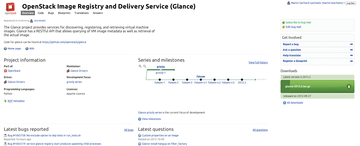
OpenStack workshop, part 1: Introduction to OpenStack
What OpenStack Really Wants
The end of September was marked by the popping of champagne corks down at the OpenStack project: Right on schedule, the project released a new version of its own cloud environment, OpenStack 2012.2 Folsom, adding many of the features that had been painstakingly developed and maintained over the preceding months. OpenStack is reliable when it comes to its self-imposed release cycle: Every six months – in October and April – a new version of the Python software sees the light of day.
The fact that the release cycle and the release data match those of Ubuntu is no coincidence: Mark Shuttleworth himself has stated that the projects are designed to be, and are, closely linked. Thus, it's also no accident that the entire OpenStack project relies on development tools by Canonical and develops almost exclusively in Launchpad (Figure 1). When Ubuntu made the whole thing more or less official back in May 2011 and dropped Eucalyptus in favor of OpenStack as its cloud solution, a murmur went through the developer community.
 Figure 1: All OpenStack development relies on Canonical's Launchpad; thus, close interaction with Ubuntu was assured from the outset.
Figure 1: All OpenStack development relies on Canonical's Launchpad; thus, close interaction with Ubuntu was assured from the outset.
One, Two, Three
...Buy this article as PDF
(incl. VAT)
Buy ADMIN Magazine
Subscribe to our ADMIN Newsletters
Subscribe to our Linux Newsletters
Find Linux and Open Source Jobs
Most Popular
Support Our Work
ADMIN content is made possible with support from readers like you. Please consider contributing when you've found an article to be beneficial.







